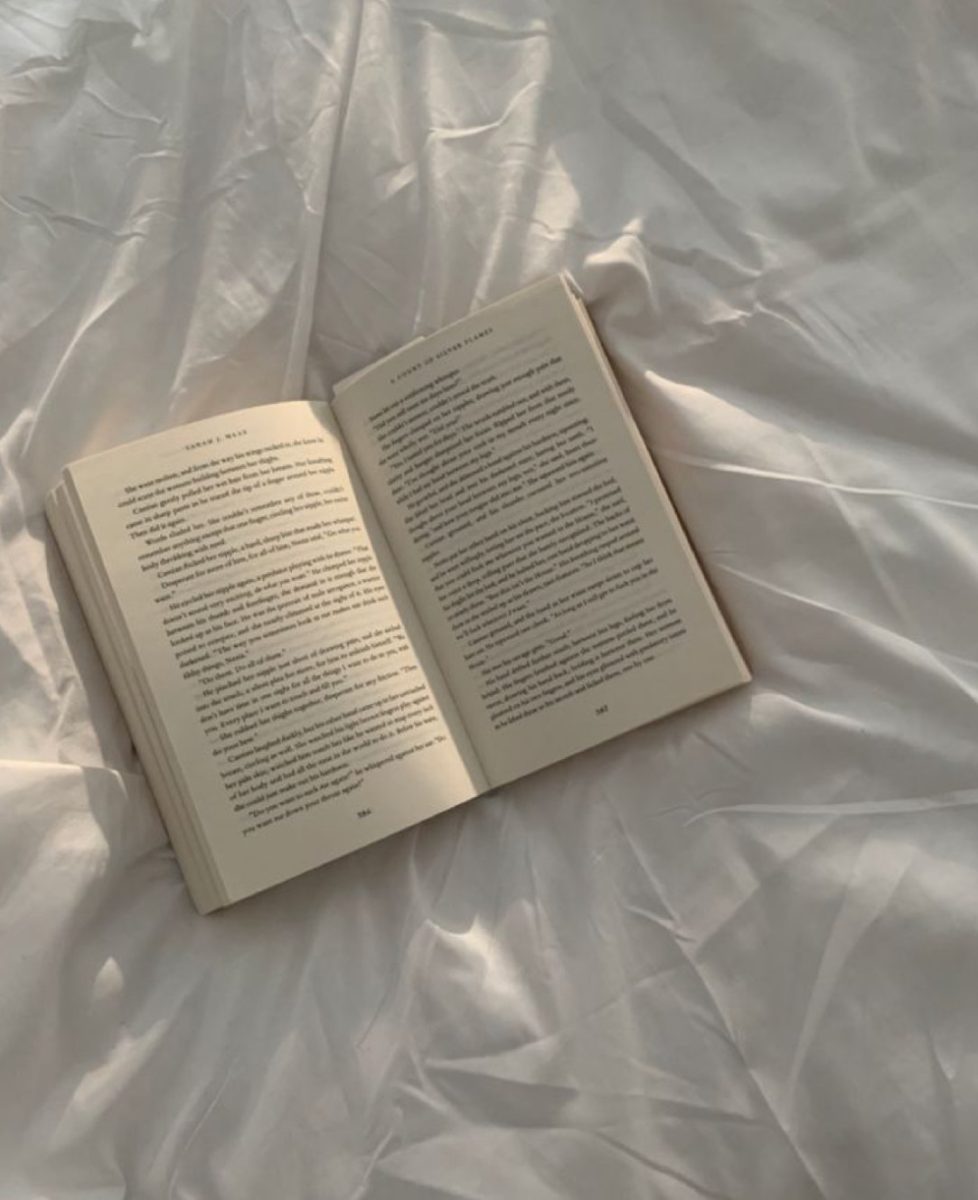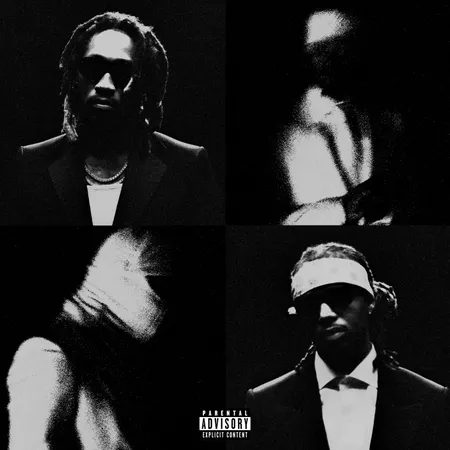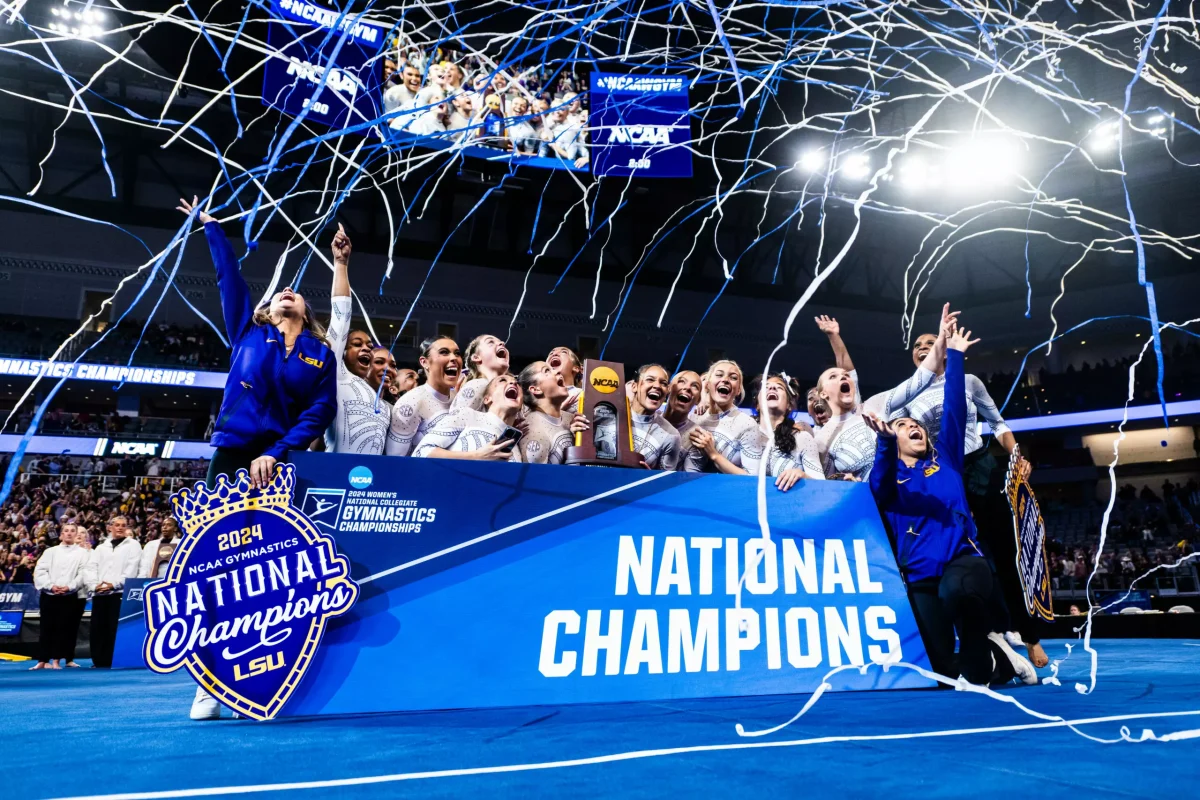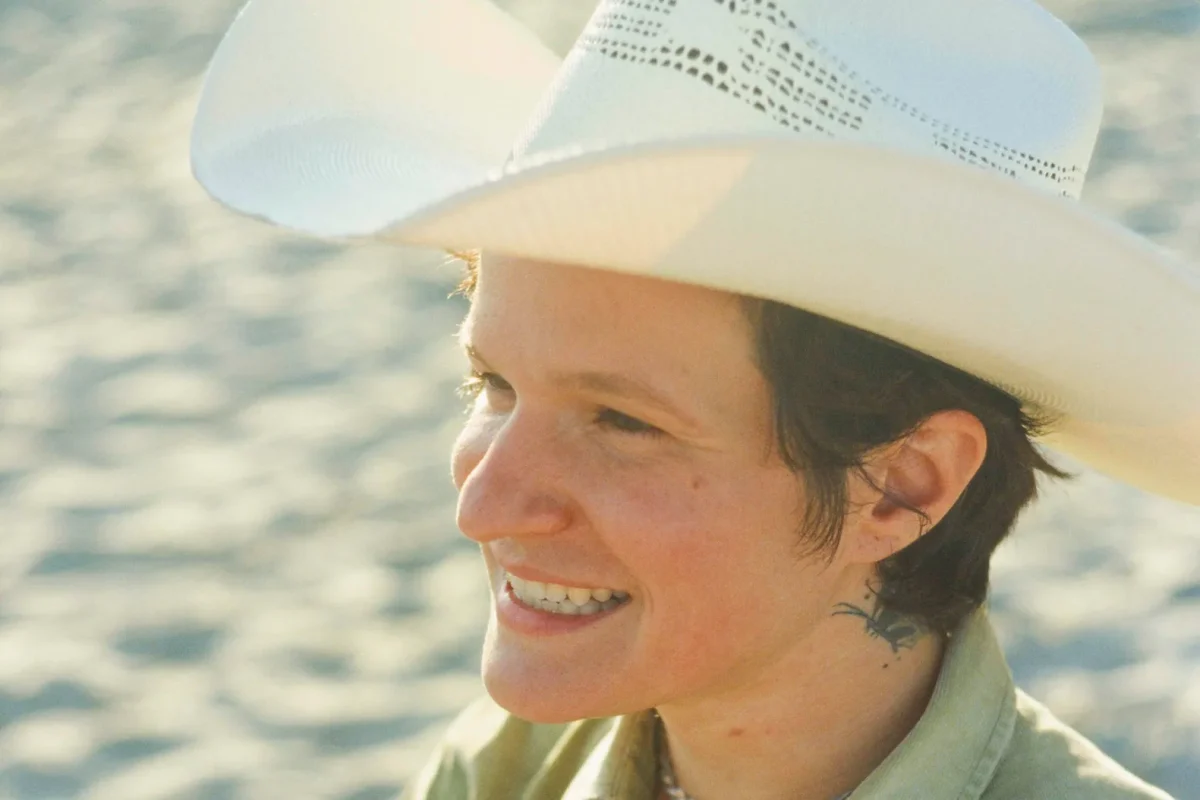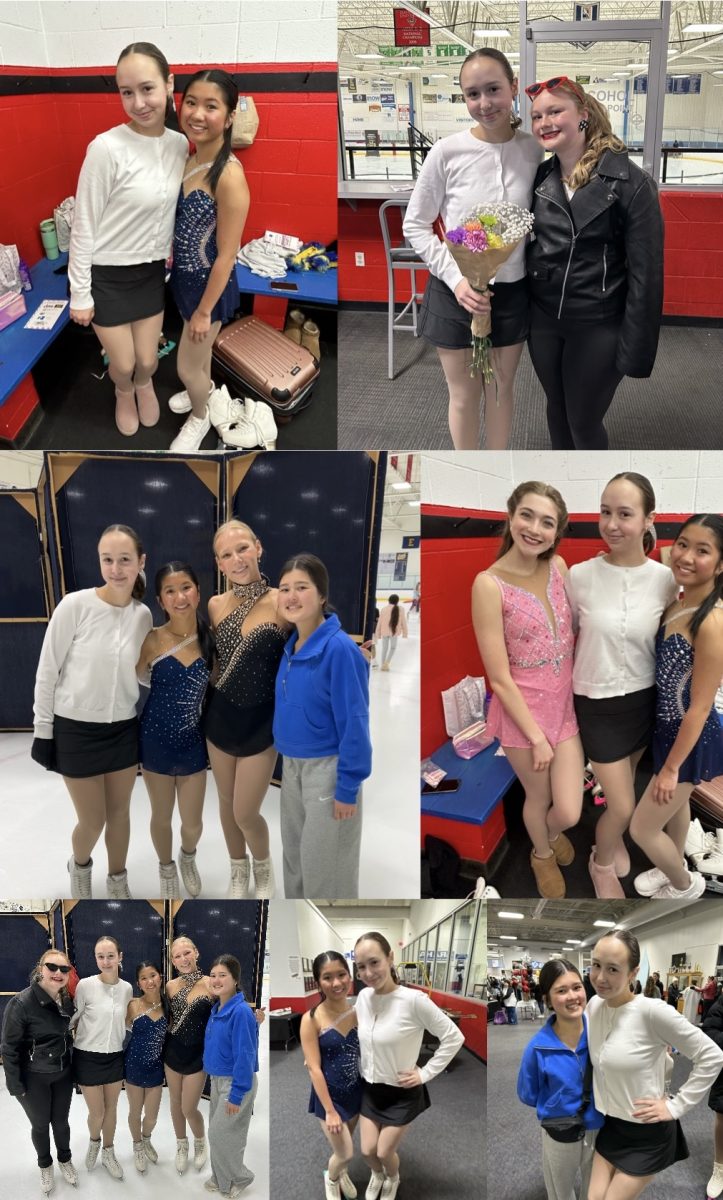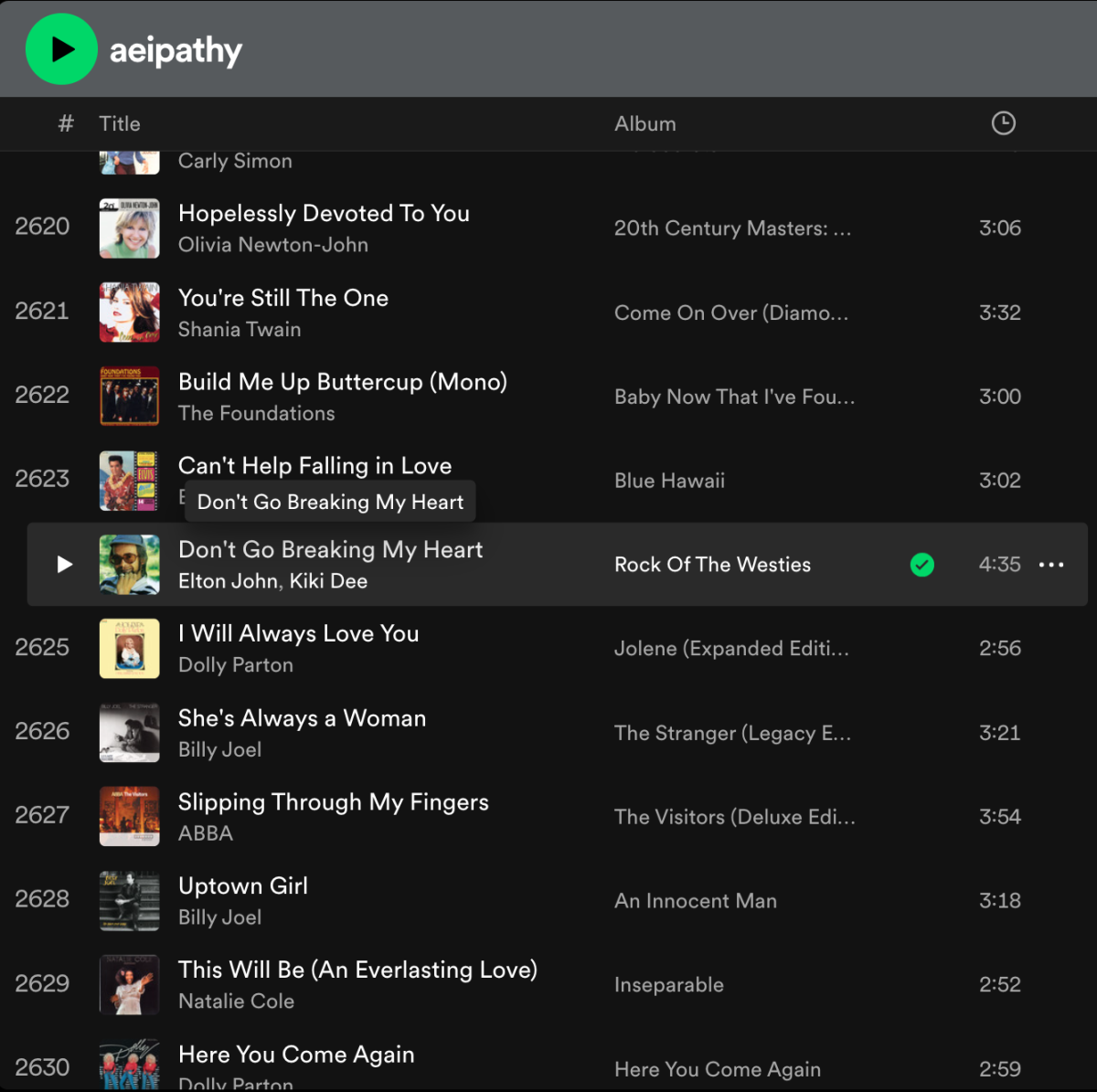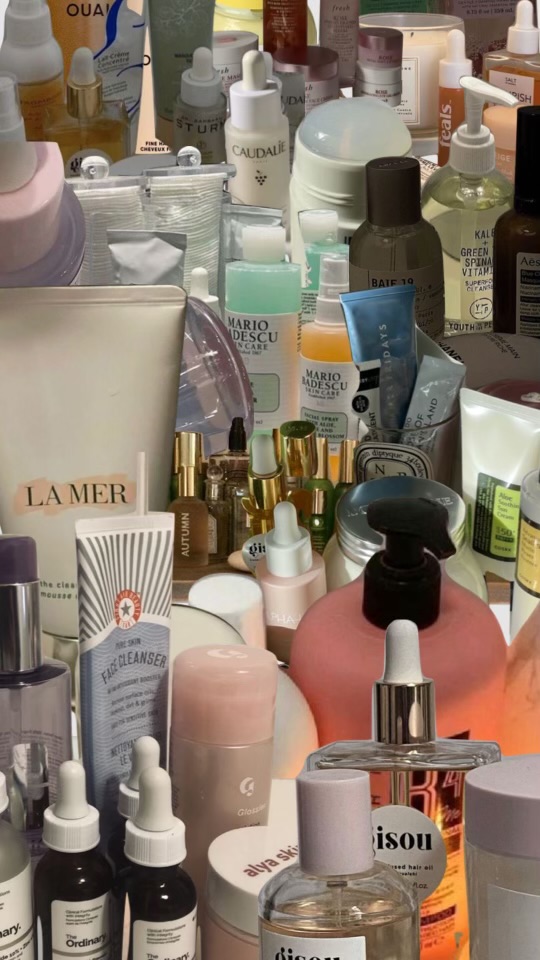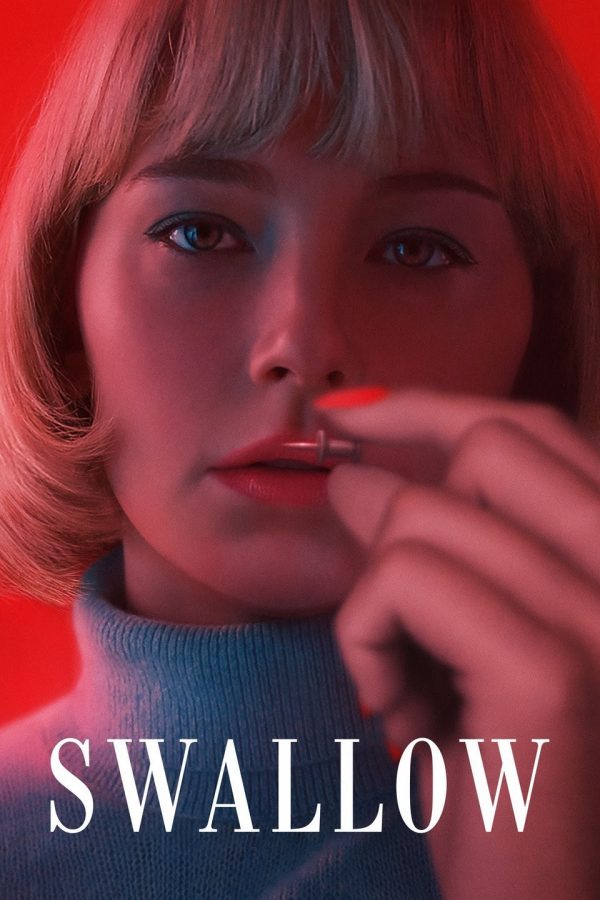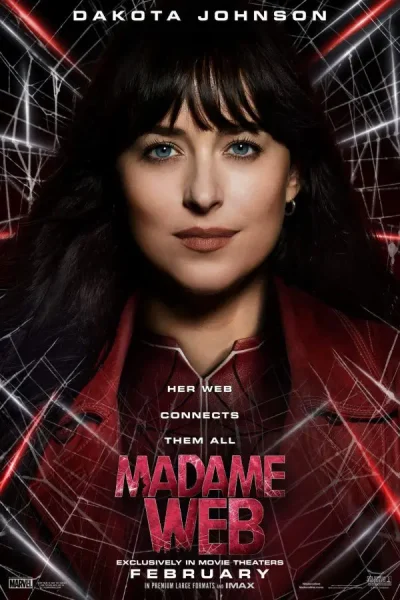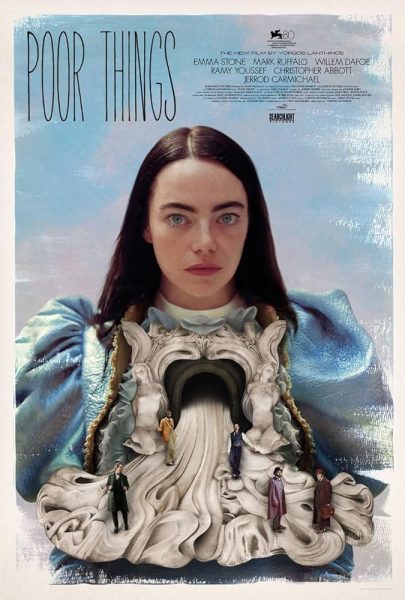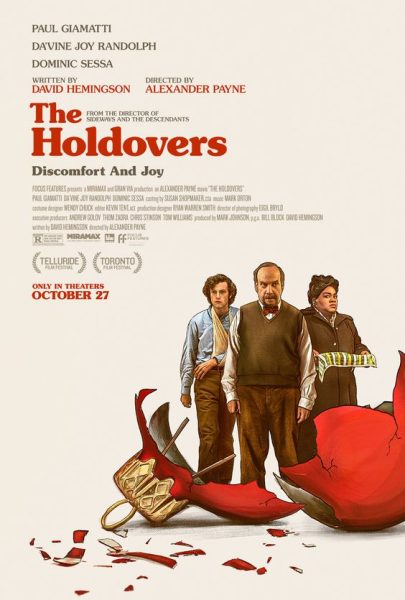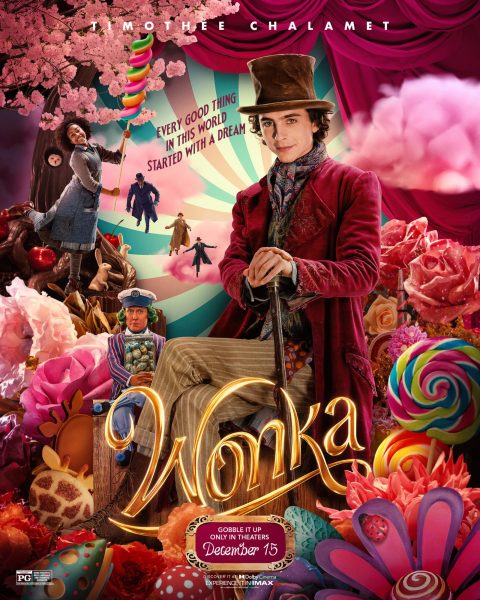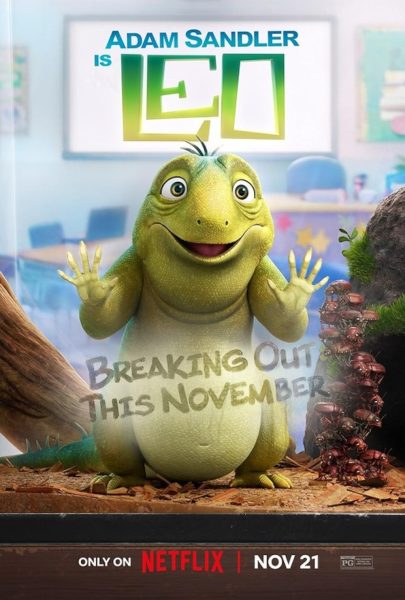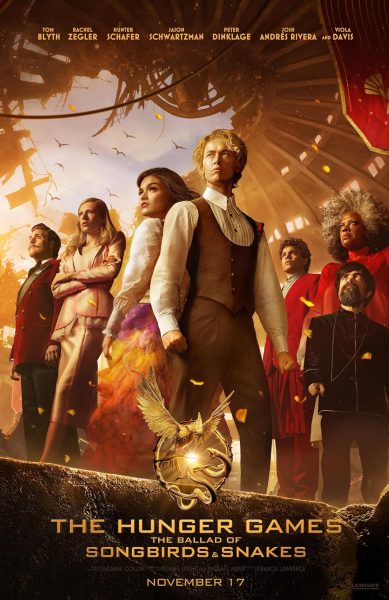The movie Swallow has a disturbing plot, but important message

More stories from Meghan Kennedy
Dustin Neiderman (graphic designer)
The official movie poster, which shows the protagonist, Hunter, holding a pin between her fingers.
A marble, a pin, and a battery are nothing short of familiar to Hunter’s diet, a housewife in the movie Swallow.
In late April of 2020, IFC Films—an indie movie company—released a movie titled Swallow that delves into the life of a domestic housewife, with an erratic twist. In the movie, the newly pregnant protagonist Hunter lives with her new husband, Richie, in their modern home, in a seemingly normal life from the surface.
I was immediately drawn to this film by the movie thumbnail, which pictures Hunter illuminated by a glowing red light, holding a push pin in front of her face. Automatically, I wondered why a push pin would have any significance to the movie, leading me to read the synopsis. Apparently, Hunter developed a compulsive eating disorder called Pica—a disorder that causes an irresistible urge to consume non-edible objects—due to her emotionally-stifling relationship and disconcerting past. After reading the description, I was sold.
Other than just the disturbing reality of Pica, I was impressed by the writers of this film for shedding light on this bizarre disorder as well as the oppression of domestic housewives and women in general. Together, they form a multi-dimensional plotline with hidden meanings and symbols. Due to Hunter’s downtrodden role as a housewife, she feels no control over anything in her life. Her husband doesn’t acknowledge or listen to her, and even her in-laws cross their anticipated boundaries, putting forth contentious action and authority. Her degenerate family trapped her in her own mind, inducing her need for control over one thing: what she consumes. She proceeds to go to life-threatening levels, eating small, metallic, and sometimes sharp objects in order to reinstate any sliver of power she can grasp.
Although this film is set sometime in the present, the outdated gender roles—which unfortunately are still greatly perpetuated in modern society—have a strong presence in the premise. As it is known, in recent years, many people commonly display a broad variety of misogyny and sexism, but something about how this was portrayed in the movie is eerily old-fashioned. Women had fewer rights and far more restrictive lifestyles back then, which Hunter’s life almost exactly resembles.
To coincide, Hunter and Richie’s house, despite its modernity, is furnished with a few ostensibly vintage chairs, couches, and other things of the sort. Additionally, Hunter wears dresses and clothing that concur with the silhouettes of fifties fashion and has a hairstyle similar to fifties taste. I would imagine that the directors of this movie intentionally made it seem that Hunter is, in a sense, trapped in an outmoded, stereotypical role to further the emphasis on the oppression she faces as a domestic housewife.
I was on edge, in a good way, the entire time, not having any semblance of an assumption as to what would come next
An additional aspect that is subtle yet noticeable, is the scope of colors projected in the scenes, most prominently shades of red and blue. Other than these two bold and contrasting shades, the rest of the scenes are primarily washed with dull hues of beige and grey.
There are many interpretations of what these colors could represent or symbolize—one being that the red is the impression of panic, urgency, and pain. Hunter always seems to be present near a red object or light, which could indicate her afflicted past looming in the background, causing deep anguish that quietly dwells within her at all times. On the contrary, she frequently appears to be adorned in blue garments. The blue could embody the soft-spoken, meek facade she holds up or could entail the freedom and satisfaction she wants to fully obtain. As for the dull, background colors, they possibly could be representative of the lack-luster world she lives in. Throughout the day, Hunter isn’t shown doing a lot of activities, besides swallowing the miscellaneous objects. Nothing much is expected of her, and she is perceived to just blend into the background—which is not the case—similar to the drab colors. She goes through her day drenched in boredom and beige, and her new “hobby” that contrasts with her life is the vivid blue and red.
As for the nature of Swallow as a whole, it is intriguing, skin-crawling, and slightly empowering all at once. It is described to be a horror film, but there is nothing really noteworthy of being ‘scary’ per se. The worst it gets is in scenes when Hunter finds a “snack” from the floor and struggles to fight whatever it is down. But nevertheless, every scene is beautifully wrapped in detail and provides a suspenseful ambiance in the most artistic of ways.
I was on edge, in a good way, the entire time, not having any semblance of an assumption as to what would come next. I felt myself oftentimes rooting for Hunter in her favorable, powerful moments. The unforeseen actions of the characters provoked a series of loving, deceitful connections. The passive condescension built my hate for some characters, while the endearing simplicity of the others grew my love.
The conclusive ending of Swallow appeased my coveted expectations and left me feeling unencumbered and fulfilled.

Meghan. also known as Meggie, is living up her senior year on The Central Trend. Starting out with a new role as Podcast Manager, Meggie is looking forward...

















